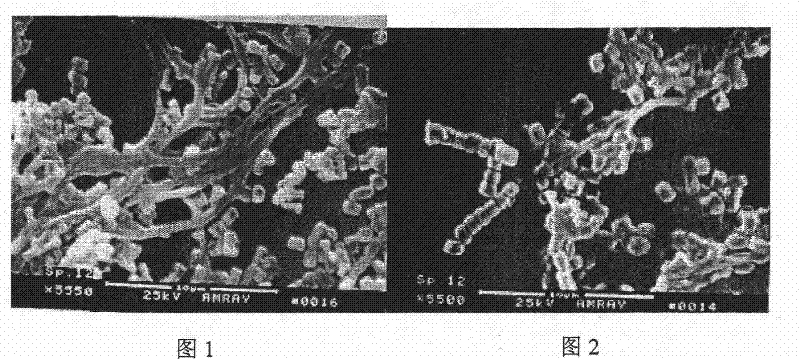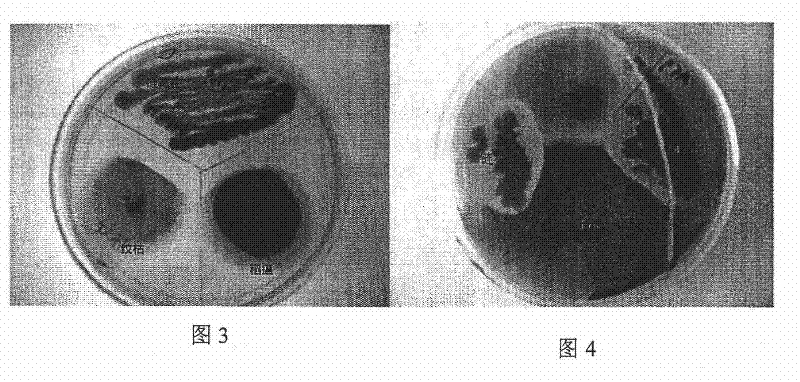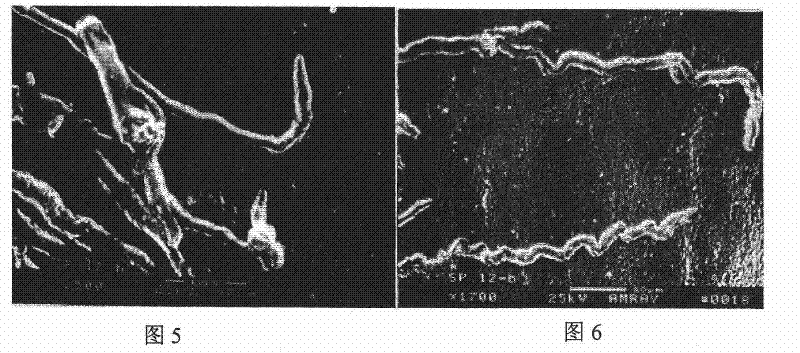Streptomyces strain for preventing rice sheath disease and rice blast disease
A technology for rice sheath blight and rice blast, applied in the direction of bacteria, fungicides, and microbial-based methods, can solve the problems of pathogenic bacteria resistance, increased drug resistance, and environmental pollution
- Summary
- Abstract
- Description
- Claims
- Application Information
AI Technical Summary
Problems solved by technology
Method used
Image
Examples
Embodiment 1
[0035] Embodiment 1: the screening method of bacterial strain
[0036] Take 1 gram of turmeric rhizosphere soil from the turmeric planting site in Ya’an, Sichuan, and place it in a 250ml triangular flask filled with 60ml of 6% sterile peptone, cultivate it at 180rpm for 30min at 28°C, then take 1ml of the supernatant, and spread it on the ISP according to the gradient method -1 medium (tryptone 5.0g, yeast extract 3.0g, distilled water 1L, pH 7.0), cultured in a constant temperature incubator at 28°C for 2 days, picked a single colony, repeated purification before testing. The rice sheath blight pathogen and the rice blast pathogen were used as indicator strains, and the obtained single colony was used to carry out confrontation culture on the plate with the pathogen.
Embodiment 2
[0037] Embodiment 2: Antibiotic research of antagonistic bacteria
[0038] A. Determination of the teratogenic effect of antagonistic bacteria on sheath blight mycelia and rice blast: Inoculate antagonistic bacteria with the confrontation method, pick the sheath blight mycelium and normal mycelium at the edge of the confrontation and observe under an ordinary optical microscope , and examined with a scanning electron microscope.
[0039] It can be seen that the protoplasm of the control normal mycelium is uniform, the mycelium is round and strong, and the mycelium nodes are longer. The hyphae of sheath blight co-cultured with antagonistic bacteria shortened internodes, enlarged growth points, agglutinated protoplasts, enlarged mycelia tops, fractured mycelia, and severely twisted mycelia.
[0040] B, the influence of antagonistic strains on the germination of sheath blight sclerotia: insert the sterile glass slide into the melted sterile PDA medium, make it with a layer of me...
Embodiment 3
[0043] Embodiment 3: Identification of bacterial strain
[0044] A. Morphological characteristics: After culturing on sucrose Chapeauer's medium for 4 days at 28°C, conventional bacterial morphology was observed with an optical microscope and a scanning electron microscope.
[0045] B. Culture characteristics: sucrose Chase medium, potato medium, oatmeal medium, yeast maltose extract, inorganic salt starch medium, glycerol asparagine medium, tyrosine medium, cultured at 28°C for 7 days and observed Colony morphology and cell color.
[0046] C. Physiological and biochemical experiments: Physiological and biochemical identification of bacterial strains was carried out with reference to the contents of "Bergey's Bacterial Identification Manual (Eighth Edition)".
PUM
 Login to View More
Login to View More Abstract
Description
Claims
Application Information
 Login to View More
Login to View More - R&D
- Intellectual Property
- Life Sciences
- Materials
- Tech Scout
- Unparalleled Data Quality
- Higher Quality Content
- 60% Fewer Hallucinations
Browse by: Latest US Patents, China's latest patents, Technical Efficacy Thesaurus, Application Domain, Technology Topic, Popular Technical Reports.
© 2025 PatSnap. All rights reserved.Legal|Privacy policy|Modern Slavery Act Transparency Statement|Sitemap|About US| Contact US: help@patsnap.com



